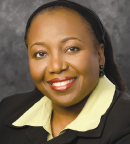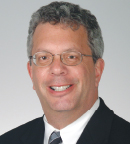
The sheer number of older patients, most of whom are on multiple medications, magnifies the issue of monitoring adverse events associated with drugs.— June M. McKoy, MD, MPH, JD, LLM, MBA
Tweet this quote
Active pharmacovigilance in detecting and assessing the safety signals related to drugs and devices, and disseminating those findings to relevant stakeholders, is an important component in delivering safe, high-quality care in the cancer setting. To reach a better understanding of this issue, among others, The ASCO Post recently spoke with June M. McKoy, MD, MPH, JD, LLM, MBA, Director of Geriatric Oncology for the Robert H. Lurie Comprehensive Cancer Center, Chicago, Illinois. Dr. McKoy has devoted much of her career to researching pharmacovigilance, cancer-related health disparities, comparative-effectiveness, and safety issues affecting older patients living with cancer and has authored more than 75 articles in the oncology literature.
A Long Educational Journey
Please tell the readers a bit about your background and your current position/work.
I was born in Jamaica and also lived and studied in Belgium, the Netherlands, England, as well as other parts of Europe. I attained my medical degree, as well as an MPH, JD, LLM (with honors), and MBA in the United States. I pursued this rather long educational journey not to acquire titles, but because I felt all these disciplines would blend and make me the best health-care provider possible and a better-rounded researcher in the area of cancer care.
I am currently Associate Professor of Medicine and Preventive Medicine at the Northwestern University Feinberg School of Medicine and Director of the Geriatric Medicine Fellowship program.
Patient Safety and Disparities of Care
Two of your research interests are patient safety for older patients with cancer and disparities of care in that oncology population. Please share your insights on that segment of your work.
Patient safety is the backbone of my work. When I started at Northwestern, about 14 years ago, I had a great mentor in the area of patient safety, whose work centered on adverse drug reactions. Due largely to his influence, adverse drug reactions also became a focus of my career dealing with the older cancer patient population.
Since cancer is essentially a disease of the elderly, we need to realize that the Baby-Boomer generation is increasing the population of individuals aged 65 and older by 8,000 to 10,000 persons a day in America. That’s a stunning statistic. Moreover, the fastest-growing segment of the aging population is 85 years and older. And the sheer number of older patients, most of whom are on multiple medications, magnifies the issue of monitoring adverse events associated with drugs.
Within the context of disparities in care, we usually think of minority groups, African American, Hispanic, and Asian; however, the elderly are atop the disparities list, moving forward as a group in their common needs and concerns. As we age, we undergo physiologic changes that need to be gauged and assessed accurately to enhance the action of medications and also to avoid adverse events.
Another central issue in dealing with our aging cancer population is the financial burden placed upon them by their therapies. In my own practice, I see the results of financial stress, which is a huge challenge for a frail elderly cancer patient. There are provisions, however, in the Affordable Care Act, which specifically address issues of elderly cancer patients. It’s far from perfect, but it’s a start. We still have a lot of work to do in understanding and treating the needs of the elderly cancer population. And we need more dedicated research in this area.
Detecting and Reporting on Unsafe Drugs
Do we have in place a fluent system to detect potentially “unsafe” drugs and relate that information to stakeholders?

Charles L. Bennett, MD, PhD, MMP
We have a better system, but it still needs a lot of improvement. My associate and mentor, Charles L. Bennett, MD, PhD, MMP, is a strong advocate for a coordinated system to detect and report unsafe drugs. He founded the Research on Adverse Drug Events and Reports (RADAR) project and, subsequently, at the University of South Carolina, he founded the Southern Network on Adverse Reactions (SONAR).
And before him, David A. Kessler, MD, as head of the U.S. Food and Drug Administration introduced MEDWatch, which was the first self-reporting system for adverse drug and device events. But it is a voluntary program that has a lot of hit-or-miss data factored into the results. We’ve spent a lot of time culling through the data to identify the potentially harmful cancer medications.
Another way to identify harmful agents is through a post-approval marketing surveillance system that gathers real-world data after a drug is out in the general population. Then there’s the massive bank of claims data we can access, but again, our ability to detect problematic drugs is only as good as the information we have.
Similarly, we have Medicare and Medicaid data banks, which offer huge repositories of information. All of this data collection is subject to the garbage-in/garbage-out rule. Ultimately, with the advent of electronic medical records, we will eventually have an interoperable reporting system that will be the most effective way to identify drugs that pose a problem to our cancer patients.
Comparative Effectiveness
Comparative effectiveness has been a much-misunderstood concept. Please talk about its relevance in cost-effective care for older cancer patients.
This is an important issue, and unfortunately it was politicized during President Obama’s Affordable Care Act campaign. The bottom line is that we need comparative effectiveness research to make sure that America’s taxpayers’ dollars going to health care result in the best value and outcomes possible. From my perspective dealing with older cancer patients, we use very expensive drugs with no comparative data on their effectiveness. And the cancer patient foots the bill; and the copayment is often too much to afford, resulting in financial toxicity.
Moreover, it’s important to note that comparative effectiveness, the term itself aside, is linked to cost-effectiveness, which is a goal on which everyone in the oncology community can agree. We cannot move forward and expect to advance our care delivery unless we address the wise use of our limited resources. Whether it’s comparative effectiveness or a spending wisely initiative, it boils down to value, which includes quality-of-life years—a metric that too often gets overlooked.
Dollar-Value Metrics
Are there dollar-value metrics to assess value in a drug?
The World Health Organization’s rule of thumb is that three times a person’s income for quality-adjusted life years gained determines the threshold for cost-effective interventions. I agree. That said, most of the studies on a drug’s cost-effectiveness are done in younger populations and do not consider the complicated physiologic differences between age groups, which ultimately affect the cost-effectiveness of the intervention that is being examined.
Ethical Challenges
You’re involved in a National Cancer Institute [NCI]–sponsored minority biobanking collection initiative. Please shed light on this important work.
One concern is that we have a largely homogeneous biobanking collection system, which has left minorities out of this important asset. This issue dovetails with Vice President Biden’s Moonshot Initiative.
To make significant progress in cancer prevention and control, it is necessary to engage members of high-risk groups, such as minorities and those affected by health disparities, in cancer research.— June M. McKoy, MD, MPH, JD, LLM, MBA
Tweet this quote
As a physician and lawyer, I’m taking a lead role in the ethical challenges involved in biobanking with populations that might be reluctant to donate their specimens to an organization. To make significant progress in cancer prevention and control, it is necessary to engage members of high-risk groups, such as minorities and those affected by health disparities, in cancer research. This process will require methods to increase participation in an array of prevention and treatment trials, perhaps with the explicit goal of improving designs, so trials are more appealing to underserved groups.
Closing Thoughts
Would you like to share some final comments?
The world’s population is aging, and with that we are facing an unprecedented global rise in the incidence of cancer. This is a worldwide challenge. We must understand that there are inequities of care throughout much of the developing world that need to be addressed, and it is our responsibility to make sure that future generations do not face this chasm of inequity.
For instance, in Chicago, we have an NCI-funded U54 Chicago Cancer Health Equity Collaborative (Chicago-CHEC), which, among other programs, supports transdisciplinary cancer research programs to foster partnerships benefitting our communities. And this is a proactive way to reduce the inequities that exist in minority communities.
My message to the oncology community is to increase our level of patient advocacy wherever we might be. Cancer patients walk a very difficult path as they deal with the physical and emotional stress of their disease. Even in small ways, most that go unnoticed, we, as cancer care specialists must also be tireless advocates for our patients. ■
Disclosure: Dr. McKoy reported no potential conflicts of interest.

